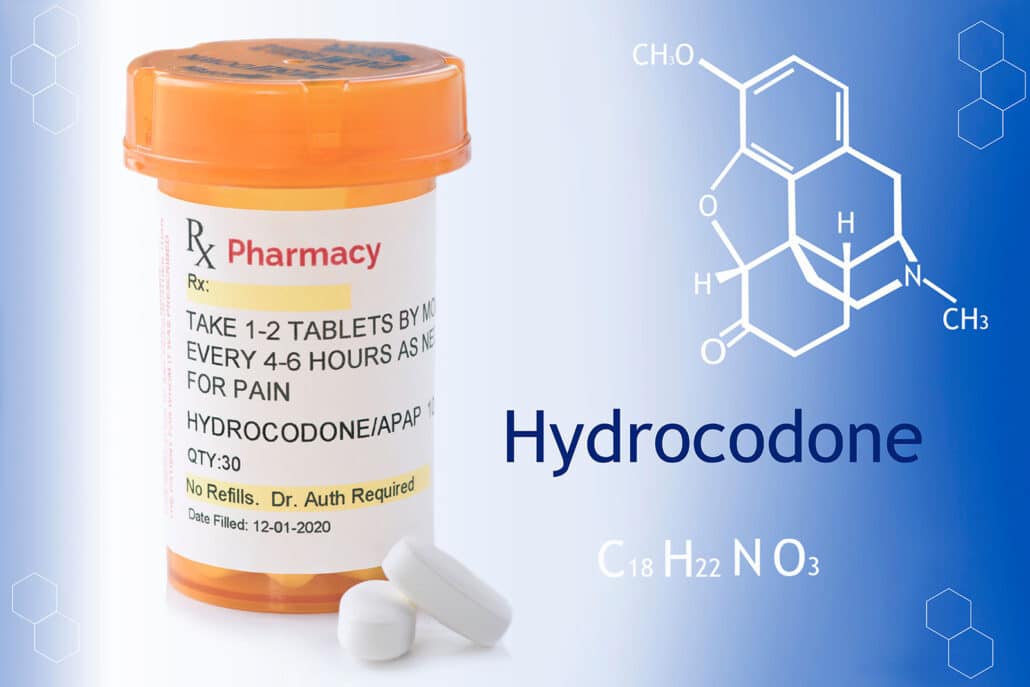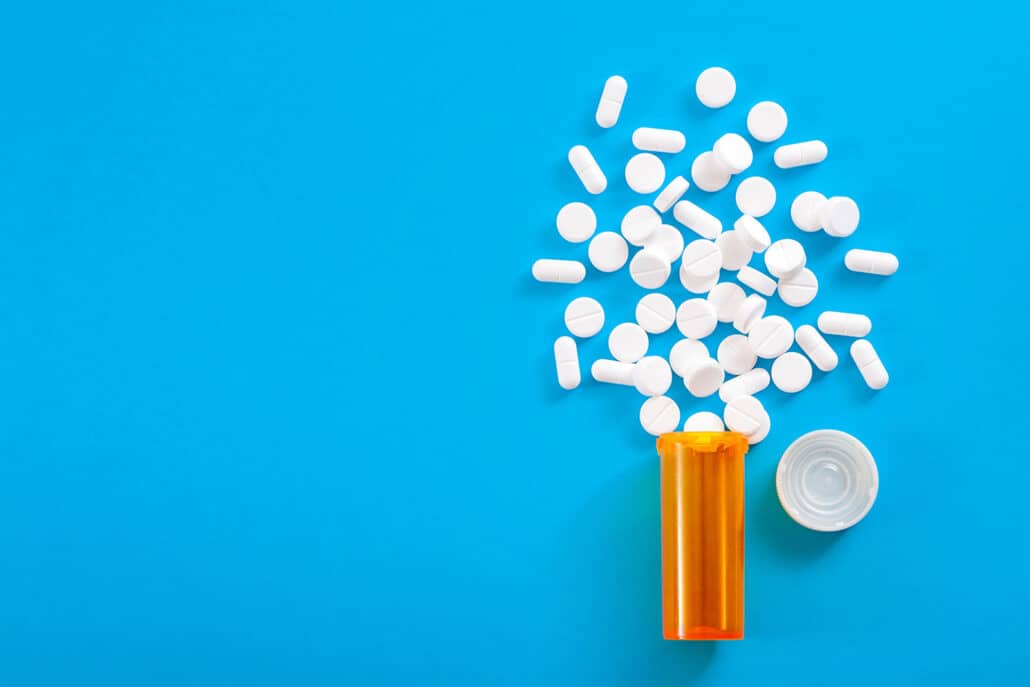About two million Americans are currently struggling with prescription drug abuse, according to a 2016 American Society of Addiction Medicine Report. Of those, a significant number are using hydrocodone, an opioid painkiller that is considered a Schedule II substance. If you or your loved one is struggling with hydrocodone abuse and other form of substance abuse addiction, the right support is critical to helping you overcome it. At Long Island Interventions, our team can help you as you learn to embrace sobriety now and in the future.

Table of Contents
What is Hydrocodone?
Hydrocodone is a prescription medication typically prescribed to manage pain. It is an opioid painkiller, but unlike morphine and codeine, hydrocodone is semi-synthetic, which means that it is synthesized from naturally occurring alkaloids derived from the poppy seed. Most of the time, the use of hydrocodone is prescribed to treat short-term pain. As with other opioid medications, hydrocodone can be habit-forming, which means that long-term use can bring risks that include addiction.
You may know hydrocodone by its generic name or by another name, including Vicodin, Norco, Lortab, or Zohydro.
How Does Hydrocodone Work?
Opioid pain relievers work by binding to pain receptors called mu-opioid receptors in the brain. When hydrocodone bonds to these receptors, it weakens or blocks pain signals, reducing or eliminating pain sensations. Because mu-opioid receptors are also linked to sensations of euphoria, many people experience positive feelings when they take hydrocodone.
Using hydrocodone for short periods and as prescribed will lessen the risk of dependence. However, when using it for long periods or using it excessively, your body can become dependent on the medication. You may also become psychologically dependent on it. Even when properly used, opioids carry a high risk of addiction and dependence.
As with other opioids, hydrocodone activates the pleasure and reward centers in the brain, triggering the brain to release dopamine and endorphins. These feel-good chemicals alter the way your brain processes pain and pleasure, creating a powerfully positive sensation. Hydrocodone’s half-life, or the time it takes for the dose to reduce by half, is about four hours, and after this, the euphoric feelings can begin to decline. The user may begin to feel pain again and crave those “high” feelings.
The urge to enjoy the dopamine and endorphin rush is what often leads users to misuse hydrocodone, and could lead to drug abuse and addiction. It is what makes hydrocodone and other opioids so highly addictive and so dangerous.
Signs of Hydrocodone Abuse and Addiction
Hydrocodone is typically prescribed for moderate to severe pain, dental pain, post-surgical pain, and similar issues. Physical dependency can begin in as little as a week, and psychological dependency may occur even faster.

An opioid, hydrocodone, belongs to a class of narcotic drugs that are typically used to manage moderate to severe pain. Opioids also include codeine, methadone, oxycodone, morphine, and heroin.
Rates of opioid addiction have risen sharply in recent years, which is why it is so important to be familiar with the signs and symptoms of hydrocodone abuse.
These can include physical and emotional signs such as:
- A lowered experience of pain
- Agitation or mood changes
- Drowsiness or sedation
- Reduced memory and poor attention
- Constricted pupils
- Poor coordination
- Depression and anxiety
- Confusion
- Constipation
Depending on the delivery route, someone misusing opioids such as hydrocodone may also have a runny nose or nose sores if they are crushing and snorting the drug.
Physical symptoms are just the tip of the iceberg. Most people struggling with hydrocodone addiction will also have noticeable changes in their behavior, which can include:
- Feeling intense urges for the drug
- Having compulsions to use the medication regularly
- Needing to increase the dose periodically to achieve the desired results
- Failing to meet personal, family, career, or social obligations as a result of drug use
- Engaging in risky activities while using the drug
- Spending money you cannot afford to obtain more of the drug
- Continuing to use the drug even though it is causing problems in your life
- Spending most of your free time obtaining the drug, using the drug, or recovering from using the drug
- Feeling unable to stop using on your own
- Suffering withdrawal symptoms when you try to stop
Some may struggle with compulsions or preoccupation. They might feel unable to stop despite a desire to quit using the medication. They may make an effort to stop using it but find themselves returning to it repeatedly. Some even “doctor shop” to find more healthcare providers willing to prescribe them their medication or engage in illegal activities to obtain their drug of choice.
While hydrocodone addiction and abuse are problematic on their own, they can also lead to more serious addiction issues. According to the National Institute on Drug Abuse, about four out of five heroin users also abused prescription opioids, many of them starting with hydrocodone.
A hydrocodone user does not need to be physically dependent or addicted to benefit from intervention. If you or someone you love is displaying one or more risk factors, counseling can be beneficial for reducing the risk of addiction and addressing the underlying factors that promote the problematic behaviors.

Risk Factors for Hydrocodone Abuse and Addiction
While some people can use medications or recreational drugs with a lower risk of dependence or addiction, others quickly become enmeshed. The risk may be higher if you:
- Have a personal or family history of substance use disorders
- Have an untreated mental health disorder
- Are younger
- Are you in an environment that encourages or glorifies substance use
- Are unemployed, or are you in another extremely stressful situation
- Use tobacco heavily
- Tend to engage in thrill-seeking or risk-taking behavior
- Have a history of criminal or legal problems, such as DUI or DWI
The type of substance you use can also play a role in your risk. Opioids such as hydrocodone tend to be highly addictive and create a physical dependence as well as a psychological addiction, making it harder to quit.
Long-Term Risks of Hydrocodone Abuse
The side effects of hydrocodone are typically mild and manageable when the medication is taken for short periods and as directed. The side effects and risks can grow exponentially when misused, abused, or taken for long periods. They can be further compounded by the use of other medications or substances as well, particularly alcohol or illegal substances.
These issues can include:
- Vomiting and stomach pain
- Bowel obstructions
- Slow heart rate and breathing difficulty
- Depression, anxiety, and dysphoria
- Mental confusion
- Moodiness and irritability
- Blurred vision
- Jaundice
- Liver disease or damage
- Seizures
- Hallucinations
- Psychosis
- Coma
- Death
Long-term use and abuse of hydrocodone significantly increases the risk of dependence and abuse as well as the risk of addiction and serious health problems.
Substance use disorder or addiction can make it difficult or impossible to control the use of a particular substance. When you are addicted to hydrocodone or another drug, such as alcohol, other opioids, or even nicotine, you continue to use the drug in spite of harm. Long Island Interventions can help.

Withdrawal Symptoms: What to Expect
Hydrocodone works quickly and peaks within a few hours of the first dose. It can remain in your system for up to eight hours. Most of the medication is filtered by the liver and kidneys, and the metabolites will leave your body through urination.
The withdrawal process can become more difficult when you become dependent on or addicted to hydrocodone.
While withdrawal symptoms are not necessarily life-threatening, they can be extremely uncomfortable. They often include restlessness, muscle pain, chills, sweating, dilated pupils, anxiety, irritability, joint pain, muscle weakness, loss of appetite, vomiting, diarrhea, rapid heartbeat, and running nose.
When withdrawing, your doctor may recommend gradually decreasing your dose to minimize the risk of withdrawal symptoms. Depending on the user, the symptoms can begin within six to 12 hours of the final dose and continue for a week to a month. Symptoms and the intensity of the symptoms can vary but often include insomnia, muscle aches and pains, and nausea. The process can be uncomfortable but manageable with the right support system.
Getting the Help You Need
Overcoming opiate addiction can be difficult, but you can do it with the right treatment program, support system, and rehab center. Detoxification (detox), medication, counseling, and medical supervision all work together to help reduce the severity and discomfort of the withdrawal process while giving you critical tools for moving forward with your life. In a period of time, counseling can help you identify triggers, develop healthy coping mechanisms from opioid overdose and other prescription abuse like fentanyl, buprenorphine, and drug addiction, and build new habits to form a positive foundation on which you can build your sobriety. At Long Island Interventions, our goal is to help you get back on the road to good health and sobriety. Contact us today to learn more.

